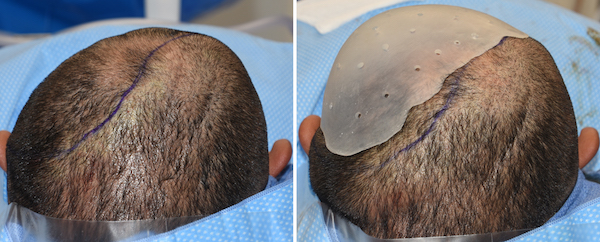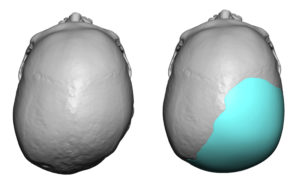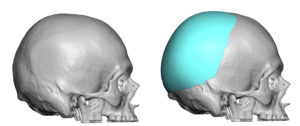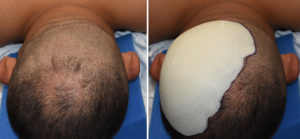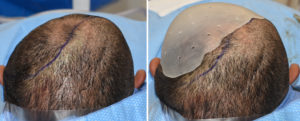Background: One of the most common and recognized non-synostotic skull deformities is that of plagiocephaly. Technically this is a generic descriptive term that refers to a flat spot on the head, particularly in babies and children. But it is most commonly seen as a flat area on the back of the head when viewed from above. The ear is almost always noted to be pushed forward on the flatter side.
While in some patients the occipital flattening may be self-correcting and early helmet therapy is the standard treatment to do in the first several years of life, when seen in adults it is a surgically treatable problem only. While the facial effects caused by plagiocephaly may pose their own aesthetic issues in either males or females, adult males are most consistently bothered by the occipital flattening. The obvious reason is shorter hair, thinning hair, or a shaved/bald head.
The effects of plagiocephaly are always more severe on the back of the head than on the face. This speaks to the origin of plagiocephaly which is from the deformational forces that occur during development or after birth. Its correction in adults focuses on the cosmetic overlay or augmentation of the deficient side of the back of the head.
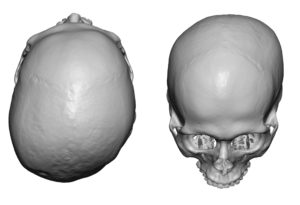
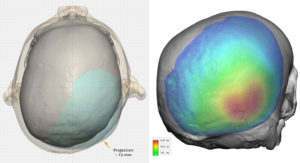
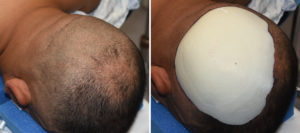
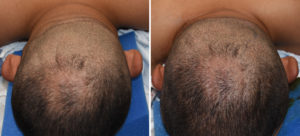
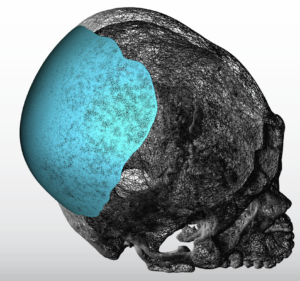
Case Highlights:
1) Plagiocephaly is most commonly seen as a flatness of one side of the back of the head although its effects are seen throughout the entire skull.
2) Augmentation of the flat occipital area is best done with a custom designed skull implant.
3) Because of the extent of many plagiocephalic skull deformities the surface area coverage of the custom skull implant is greater than one may think in the parietal bone area.
Dr. Barry Eppley
Indianapolis, Indiana

